
Hex Nuggets #2: Basic Movement / Etiquette This Nugget has been written by Point01IV on 28 Mar at 3:42AM Category: Hex My first nugget indirectly described what I call a “placement,” which is simply a player placing a piece on the board. When making a placement, you should always have a purpose for it. Of course, this is easy to say but more difficult to accomplish in-game. When considering a placement, identify that purpose. There are a few different purposes you should be looking at. These can be: - Controlling the center (especially in the early game). - Creating a connection between your opposite sides. - Blocking the opponent from creating a connection between their opposite sides. - Forcing your opponent to make a move. - Strategically placing a piece that can be connected with later. As a game becomes more complex, other purposes can become apparent, but these are ones that can be looked at immediately at the start of the game. It is possible (and advantageous) to achieve many purposes for one placement. Controlling the Center Just like many games (chess is a popular one to relate to), an early control of the center allows you to control the game. The reason for its power is that it opens many options for play. A piece in the center of an empty board can be directly connected with on six sides, and indirectly connect with (discussed later this nugget) on six others. Green circles in the below image outline direct connections, and yellow outlines indirect connections. 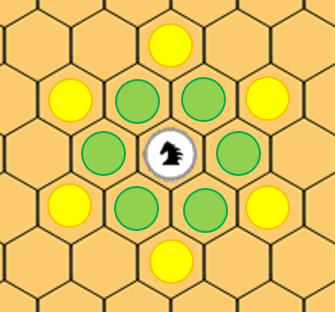 Take in contrast, a piece placed in one of the corners. In the next photo, the player has limited connections to their placed piece substantially compared to the first (3 direct connections, 2 indirect connections). 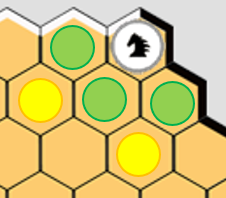 Again, as the game progresses, there may be valid reasoning for the latter placement, but in the initial game (aside from utilizing strategy for the swap rule, which will be covered in a future nugget), placement in the center of the board is far superior. Creating/Blocking a Connection This section will help explain the importance/value of indirect connections. Recall that the object of the game is to create a solid line connecting your two opposite sides. Let’s take a look at how indirect connections aid in this task. Consider an empty board with one piece placed in the center (just as in the first image of this nugget). Now, let’s look at how placing a piece so it directly connects would look. The order in which the pieces are placed is numbered. 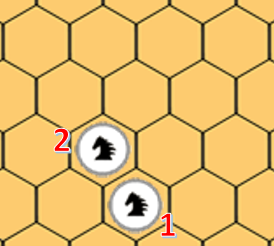 Though a move like this can occur later in a high-level game, this is more akin to a novice-level player when it is played on an empty board. A stronger move would be an indirect connect, such as the below: 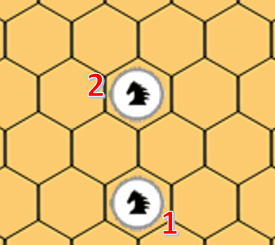 The strongest argument for this move is that it is creating a solid connection faster. On an open board, black cannot make any placements that would split both of white’s pieces, even though there are two empty spaces in between them. The below image shows the correct response if black were to try to split white’s pieces. 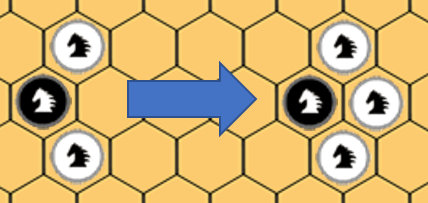 Please note that this works flawlessly on an open board, but in a middle/late-game board, there could be some advantage to the move, such as forcing your opponent to make the move or strategically placing a piece that can be connect to later (2 purposes mentioned earlier). Placing a piece to make an indirect connection is also advantageous because it is as much of a defensive move as an offensive move. As the move creates potential for a solid connection, this also blocks the opponent from using that space to do the same. It is important to see both the offensive and defensive aspects of your moves, because almost every move (especially in the early game) has both defensive and offensive value. Let’s consider further the value of indirect connections. If we can take indirect connections and turn them into a direct connection in one turn, the below image shows an inevitably a won game. 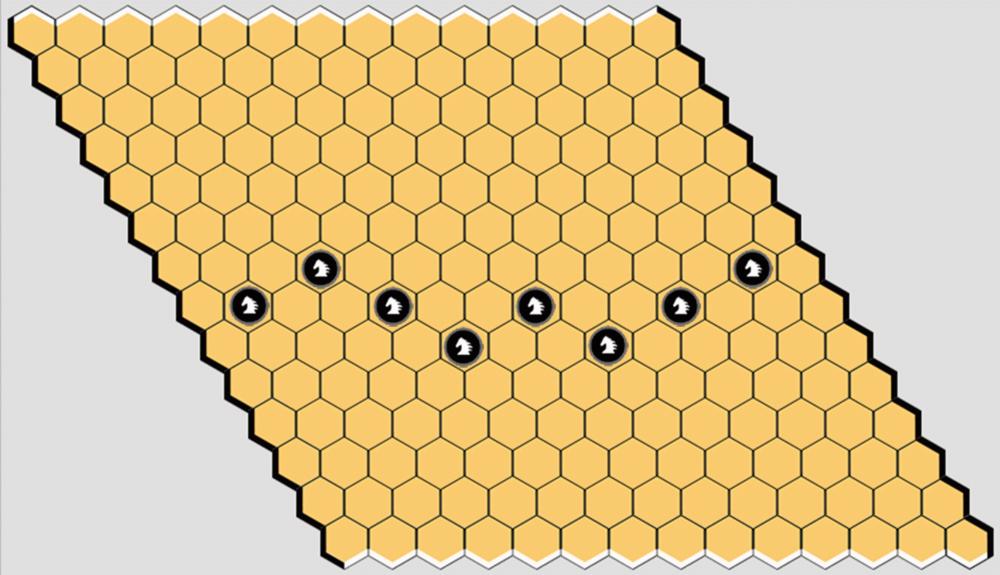 If at any open space in that chain, white were to place a piece, black has an immediate response that closes that gap securely. As mentioned earlier, in advanced play and with other pieces on the board, there are possibilities to exploit those gaps, but for the purposes of introducing basic placement, consider the indirect connections as powerful and impregnable. This ultimately leads up to a plea in Hex etiquette. On a 14x14 board, there are 169 spaces, equaling just over 84 placements per player, which can make a very long game. If your opponent has created a chain of indirect connections (such as the above) that brings an inevitable win, consider it to be proper to resign at that point instead of forcing them to continue the connection. Not all connections are as straight as the one above and can weave through all locations on the board before making the winning connection. Recognizing the win, and conceding, can potentially lead to a better relationship between players and more game slots to play. The next nugget will focus on the Swap Rule and Connection Techniques. Nugget Votes This Nugget has received 3 upvotes and no downvotes. You need to log in first to vote on Nuggets. Nugget Comments No comments have been posted yet. |
©2000-2025 GoldToken.com LLC. All rights reserved. |